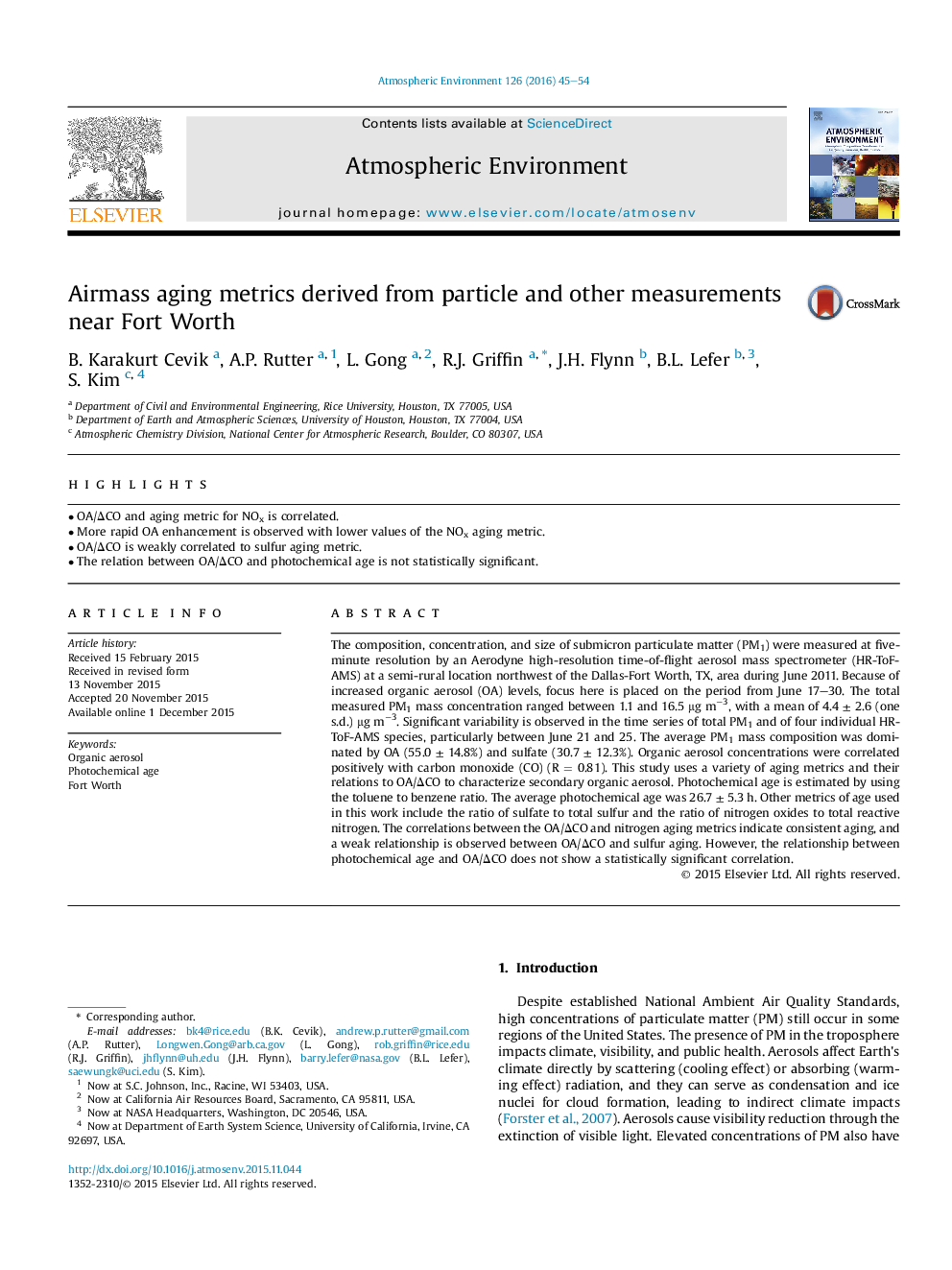| Article ID | Journal | Published Year | Pages | File Type |
|---|---|---|---|---|
| 6337156 | Atmospheric Environment | 2016 | 10 Pages |
Abstract
The composition, concentration, and size of submicron particulate matter (PM1) were measured at five-minute resolution by an Aerodyne high-resolution time-of-flight aerosol mass spectrometer (HR-ToF-AMS) at a semi-rural location northwest of the Dallas-Fort Worth, TX, area during June 2011. Because of increased organic aerosol (OA) levels, focus here is placed on the period from June 17-30. The total measured PM1 mass concentration ranged between 1.1 and 16.5 μg mâ3, with a mean of 4.4 ± 2.6 (one s.d.) μg mâ3. Significant variability is observed in the time series of total PM1 and of four individual HR-ToF-AMS species, particularly between June 21 and 25. The average PM1 mass composition was dominated by OA (55.0 ± 14.8%) and sulfate (30.7 ± 12.3%). Organic aerosol concentrations were correlated positively with carbon monoxide (CO) (R = 0.81). This study uses a variety of aging metrics and their relations to OA/ÎCO to characterize secondary organic aerosol. Photochemical age is estimated by using the toluene to benzene ratio. The average photochemical age was 26.7 ± 5.3 h. Other metrics of age used in this work include the ratio of sulfate to total sulfur and the ratio of nitrogen oxides to total reactive nitrogen. The correlations between the OA/ÎCO and nitrogen aging metrics indicate consistent aging, and a weak relationship is observed between OA/ÎCO and sulfur aging. However, the relationship between photochemical age and OA/ÎCO does not show a statistically significant correlation.
Keywords
Related Topics
Physical Sciences and Engineering
Earth and Planetary Sciences
Atmospheric Science
Authors
B. Karakurt Cevik, A.P. Rutter, L. Gong, R.J. Griffin, J.H. Flynn, B.L. Lefer, S. Kim,
